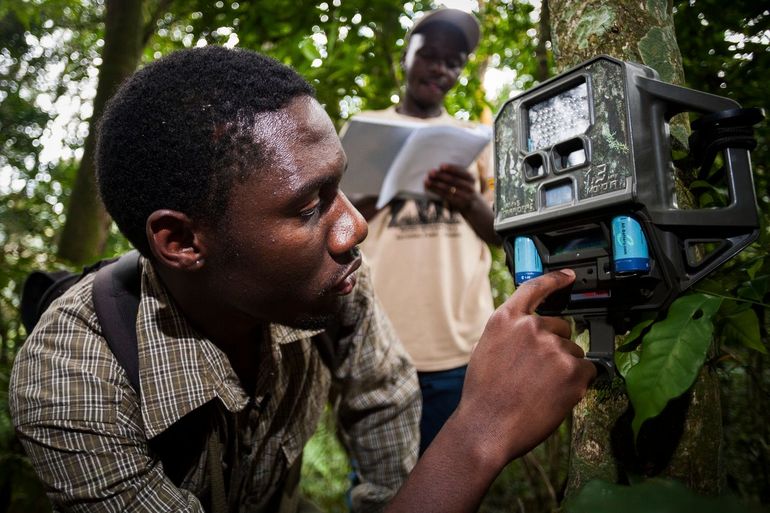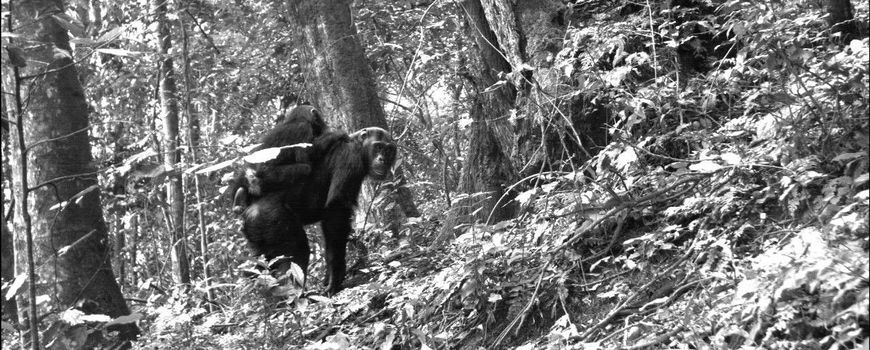In a new study in Nature communications an international team of scientists investigated whether there are consistent patterns in places and regions in how different animals spend their day. This forms an important basis for any follow-up research into the effects of human activity.
Professor Douglas Sheil of Wageningen University & Research, who helps lead the project, explains the idea: ‘At first glance, the faunas of different tropical regions are different. There are no gorillas or elephants in the tropical forests of America, nor tapirs in Africa and not the armadillos of Asia This is the result of the detailed history of the exchange, isolation and evolution of species within each area But if we look deeper and consider how each of these animals makes to live, similarities become hidden differences: for example, each region has a range of differently sized species that feed on plants, insects, and other animals. How profound are the similarities when we consider how animals use time? For example, Would coexisting species have the same tendency to prefer diurnal or nocturnal activity, depending on their needs and limitations?”
More than 2 million photos
Lead author Andrea Vallejo Vargas of the Norwegian University of Life Sciences said: ‘Our eyes in the forest are the many camera traps that let us know when even the most secretive animals are active. Thanks to the more than 2.3 million images the TEAM (Tropical Ecology Assessment and Monitoring), we studied the activity of mammals in 16 protected areas in different regions and, by comparing 166 species simultaneously, we were able to determine whether nutritional requirements and size influence the level of activity of the animal. these patterns across the continents and how they correspond to prevailing theories”.
Constant daily activity
The study revealed constant daily activity of tropical mammals on all continents, depending on body size and their nutritional needs. Larger fruit- or leaf-eating species and insects (except in the Neotropics of Central and South America) are more active at night than smaller species. Researchers have determined that increased nocturnal activity is associated with an increase in body size that responds to temperature. Large carnivores and omnivores, on the other hand, are more active during the day than smaller species that have similar nutritional needs. Interactions have been found to be the most important factor in determining the activity of carnivores and omnivores.

Insectivores were the one exception where the pattern varied between continents: the largest species were more diurnal in America, while the reverse was true in Africa and Asia. The reasons for this are unclear, but the behavior of neotropical insectivores reflects very different needs from those that have evolved elsewhere. This is probably due to the long evolutionary isolation of the South American continent.
Additionally, researchers have found that predators and prey influence each other’s behavior. Apex predators, in particular, follow activity patterns that match their prey. This has consequences for other species as well.
Why is this important?
Besides being fascinating in its own right, it is invaluable to know how natural and near-natural communities behave and interact so as to have a reference for exploring such patterns in less pristine areas. For example, we know little about the effects of human activities, such as hunting or the presence of artificial light, and about communities where certain species, such as large carnivores, are now rare or absent. Such explorations will be the subject of future research.
Text: Wageningen Environmental Research
Photo: Tropical Ecology Assessment and Monitoring (TEAM) Network (main photo: primate with pup. An image from camera traps); Benjamin Drummond and Sara Joy Steele


